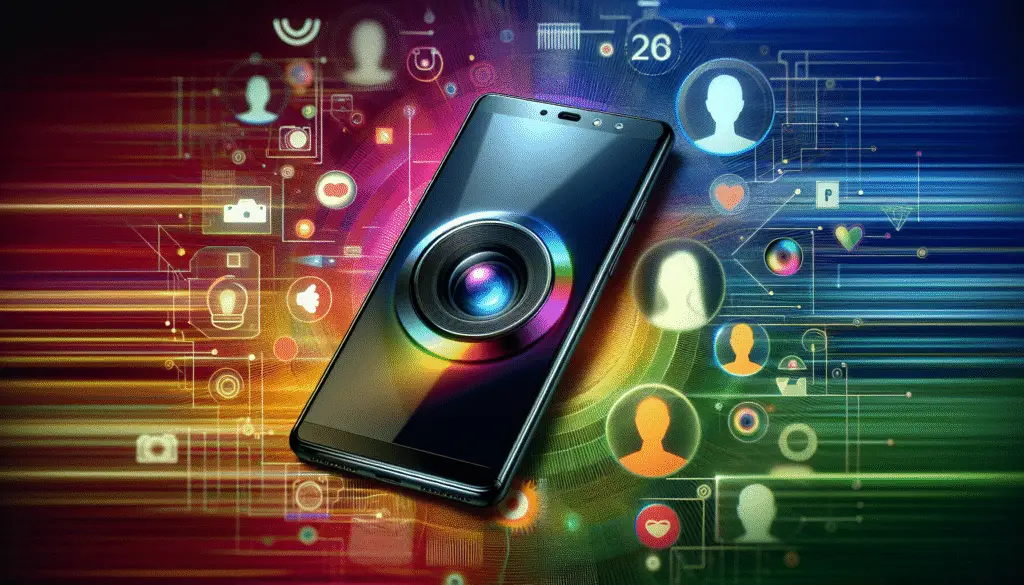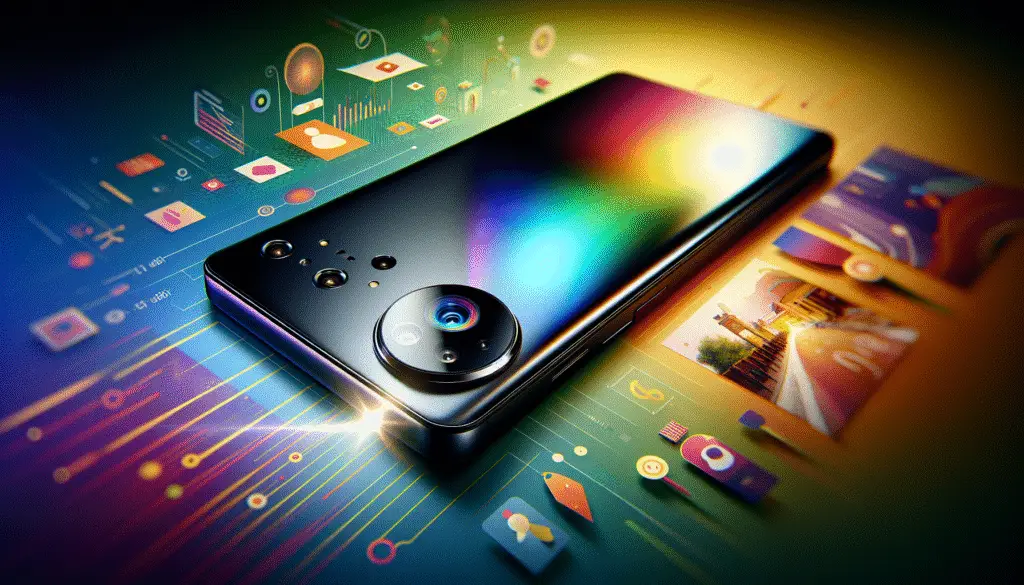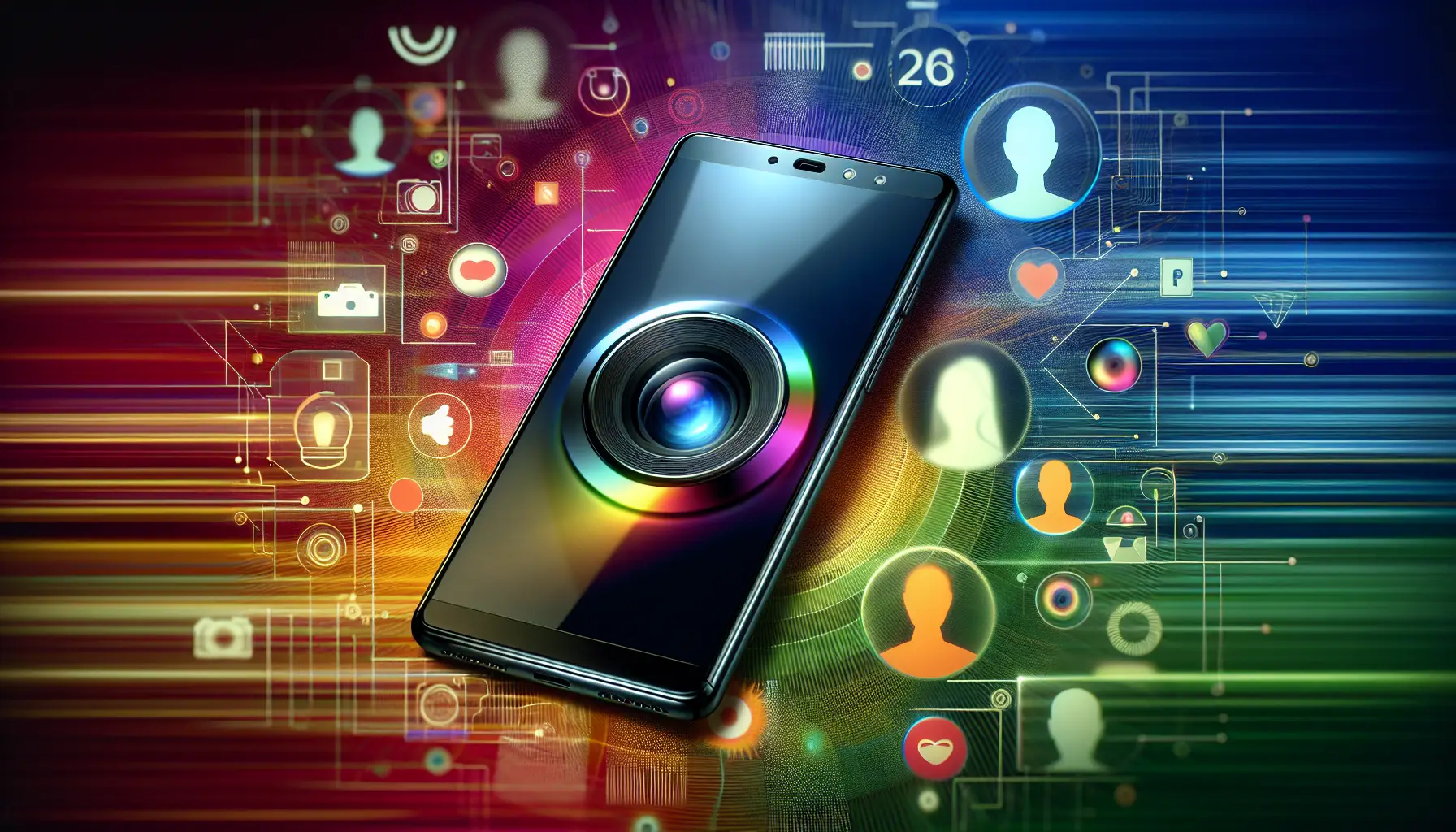What does it mean to carry a powerful camera in our pockets? In today’s tech-savvy age, the answer often revolves around the term “AI camera.” As we navigate the modern smartphone landscape, it’s clear that AI has fundamentally changed the way we capture, edit, and share moments. But what exactly is an AI camera in a smartphone, and how does it enhance our photography experience? Let’s unpack this together.
Understanding AI Cameras
At its core, an AI camera refers to the integration of artificial intelligence with smartphone camera technologies. This combination allows our phones to understand and interpret images in a way that resembles human thought processes. With AI, our devices become smarter, identifying scenes and adapting settings for optimal photography performance.
How AI Enhances Photography
When we look at traditional camera functions, we see that they rely heavily on user expertise. We’ve all experienced that moment when we fumble with settings, trying to capture the perfect shot. AI simplifies this process by automatically adjusting parameters based on the scene.
From recognizing faces to optimizing lighting conditions, AI enables our smartphones to handle various challenges with ease. Here’s a simple table breaking down some AI features and their benefits:
| Feature | Description | Benefits |
|---|---|---|
| Scene Recognition | AI detects the subject (landscape, portrait, etc.). | Automatically adjusts camera settings. |
| Image Enhancement | AI optimizes color, contrast, and brightness. | Produces vibrant, true-to-life images. |
| Low Light Optimization | AI enhances images in dim conditions. | Reduces noise and improves clarity. |
| Portrait Mode | AI blurs backgrounds while keeping the subject in focus. | Creates professional-looking photos. |
| Object Detection | AI identifies and classifies objects within the frame. | Helps us frame shots more creatively. |
With these features, we can comfortably shoot photos without needing to have a PhD in photography. It’s like having a knowledgeable friend guiding us through the process.
The Evolution of Smartphone Cameras
When we reflect on the evolution of smartphone cameras, it’s astonishing to see how far we’ve come in a relatively short span. Early smartphones had basic cameras, primarily designed for quick snapshots. Over time, innovations in hardware paved the way for the sophisticated AI technology we see today.
The Transition from VGA to Megapixels
In the early days of smartphones, cameras were measured in VGA or a few megapixels. As technology advanced, manufacturers began cramming more and more megapixels into tiny lenses. This shift made it possible for us to capture images with much greater detail, but there was still room for improvement regarding user experience.
The Rise of Computational Photography
With the introduction of AI, we entered the era of computational photography. This revolutionary approach leverages complex algorithms that allow for advanced image processing. It’s not about simply capturing more pixels; it’s about making each shot we take look as good as it can.
AI-driven features, such as HDR (High Dynamic Range), allow us to get better shots in scenes where light varies dramatically. This means we can finally enjoy clear skies and dark shadows in the same image without sacrificing quality.

Key Features of AI Cameras
When researching AI cameras in modern smartphones, we can recognize several standout features that enhance our photography experience. Each element plays a vital role in how we document our lives.
Scene Mode Optimization
How many times have we taken a picture of a sunset, only to find it appears dull or washed out? Scene mode optimization addresses this problem. This feature uses AI to discern various scenes—like sunsetting skies, bustling streets, or serene beaches.
With scene mode, our smartphones can automatically adjust settings such as exposure and color balance, ensuring that every photo we take feels alive and vibrant. This is particularly useful for those of us who may not have the time or knowledge to adjust settings manually.
AI-Powered Filters
Filters have become synonymous with social media and smartphone photography. While traditional filters rely on basic algorithms, AI has introduced a new dimension. AI-powered filters analyze images, making intelligent adjustments that enhance them without making them look artificial.
Imagine snapping a photo of a friend, and the filter recognizes their facial features to smooth out skin tones while maintaining the authenticity of the moment. We can enjoy creative expression without compromising the integrity of our images.
Real-Time Image Processing
Gone are the days of waiting for our photos to finish processing before we can see the final result. With AI at play, our smartphones can deliver real-time edits. This means that when we snap a shot, we can see immediate enhancements, allowing us to adjust our framing or pose if necessary.
Night Mode
For those of us who enjoy nighttime photography, AI cameras offer a game-changing feature: night mode. This function optimizes low-light settings by utilizing multiple photography techniques. The camera captures several images in quick succession, merging them to yield a well-exposed shot.
Picture this: we’re out with friends on a city night, the lights twinkling in the background. With the night mode, we can snap a photo without worrying about graininess or excessive noise. Instead, our images come out crisp and beautiful.
The Role of AI in Video Recording
AI cameras haven’t just improved our still photography; they’ve also transformed the way we capture video. Today’s smartphones are capable of producing videos that rival those shot on professional cameras—thanks to AI-assisted features.
Stabilization and Tracking
We’ve all experienced shaky footage, resulting in cringe-worthy videos. AI has become a powerful ally in stabilizing our recordings, making it feel as if we’re using a professional gimbal.
Additionally, AI tracking can focus on subjects dynamically, ensuring that they stay in frame, no matter how much they move. Whether we’re recording a dance performance or capturing our dog zooming around the park, these features help us achieve impressive results.
AI Editing Tools
Editing videos can often feel like a daunting and time-consuming task. However, AI is working hard to simplify this process. Some smartphone models incorporate tools that automatically trim, splice, and enhance videos based on our preferences.
Imagine recording a birthday party and wanting to quickly whip together a highlight reel. AI edits can help us find the best moments, speeding up the creation of shareable content while maintaining professionalism.

The Impact of AI Cameras on Social Media
With the rise of social media platforms like Instagram and TikTok, we are essentially documenting our lives visually on a daily basis. AI cameras in smartphones have undoubtedly transformed this landscape, enabling us to capture shareable content without expert knowledge.
Authenticity in Image Sharing
The pressure to present picture-perfect images can be overwhelming, especially when scrolling through our feeds. The beauty of AI is that it allows us to capture authentic moments without heavy editing. Rather than hiding behind perfection, we can share genuine experiences, leading to more meaningful connections with our audience.
Trends in Photography
Over the years, we’ve noticed how trends in photography often dictate the type of content that gets shared. From overhead shots of meals to dramatic portraits, AI has helped make such trends more accessible. Now, these once-complex styles are achievable with just a few taps on our smartphones.
Challenges and Considerations
While we can appreciate the advantages of AI cameras, it’s essential to address some challenges that arise along with the benefits.
Over-Reliance on Technology
With the ease that AI provides, we may become too reliant on it. As a result, we might lose our understanding of basic photography principles. It’s crucial for us to remember the fundamentals and continue developing our skills, even if our phones do much of the work.
Privacy Concerns
In an age where privacy is constantly on our minds, AI cameras raise important questions. Features like facial recognition and object detection come with implications that relate to data security. As we capture and share photos, we should always be wary of what we’re sharing and who has access to our images.
Aesthetic Over Authenticity
While AI tools help to enhance our images, we must be cautious about over-editing. A balance is necessary between improving our photos and staying true to reality. The integrity of our content matters, and we don’t want our audience to feel misled by alterations.
The Future of AI Cameras
As technology continues to advance, we can only imagine what the future holds for AI cameras in smartphones. Innovations are rapid, and it’s thrilling to think about the possibilities that await us.
Potential Advancements
There are discussions around the integration of augmented reality (AR) with AI camera functionalities. This could provide us with new ways to visualize scenes before capturing them. Additionally, AI’s role in editing could become even more refined, understanding our personal preferences and styles more thoroughly.
Accessibility for Everyone
One of the most promising aspects of AI cameras is their ability to democratize photography. As these features become standard in more affordable smartphones, we can share the joy of high-quality photography with individuals from all walks of life.
Conclusion
In our exploration of AI cameras in modern smartphones, we’ve uncovered an exciting world of possibilities. AI has empowered us to become more than passive observers in our lives, transforming us into active creators.
The blend of convenience and quality has reshaped how we take and share our photos, making it easier than ever to express ourselves. As we continue this journey with our smartphones, let’s embrace the technology that enables us to capture and share our unique perspectives while remaining mindful of the challenges it presents.
So, next time we raise our phones and click that shutter, let’s remember the intelligent technology behind the lens and celebrate the memories we’re making every single day.

